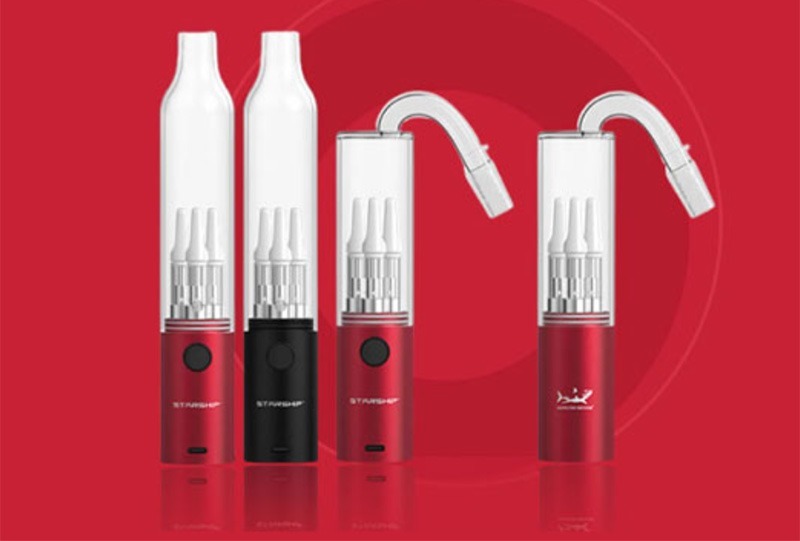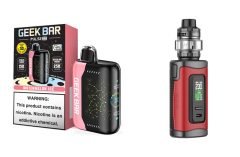Table of Contents
 The fact that the entire vaping industry has coalesced around the 510 thread as a universal standard is both a good thing and a bad thing. Since virtually every vaping device on the market uses the 510 thread, it means that you can generally buy a device with complete confidence that it’ll be physically compatible with any tank or cartridge you want to use. That doesn’t mean, however, that it’ll give you a good experience – or that it’ll actually work at all. Although they’ll both have the 510 thread, a large vape mod is very different from the types of 510-thread vape batteries that you’ll find at a vaporizer specialist like Hamilton Devices.
The fact that the entire vaping industry has coalesced around the 510 thread as a universal standard is both a good thing and a bad thing. Since virtually every vaping device on the market uses the 510 thread, it means that you can generally buy a device with complete confidence that it’ll be physically compatible with any tank or cartridge you want to use. That doesn’t mean, however, that it’ll give you a good experience – or that it’ll actually work at all. Although they’ll both have the 510 thread, a large vape mod is very different from the types of 510-thread vape batteries that you’ll find at a vaporizer specialist like Hamilton Devices.
In short, you can’t buy just any 510 vape battery and expect it to work with whatever tank or cartridge you’d like to connect to it. It’s important to buy the right battery for your needs, and this article is going to help you do it. Here’s everything you’ve ever wanted to know about 510-thread batteries.
Inhaling Style
A 510 vape battery operates in one of two ways. It’ll use an automatic firing mechanism, or it’ll have a manual fire button. A few batteries offer both firing methods. Here’s how they differ.
- Automatic Firing: An automatic 510 battery has an internal airflow sensor, and it generates vapor automatically when you puff on the connected cartridge. The main benefit of automatic firing is that it’s completely intuitive and feels a bit like smoking. The drawback is that even the best automatic battery will always have a slight delay before it starts producing vapor.
- Manual Firing: A manual 510 battery has a fire button, and it generates vapor when you hold the button. Holding a manual fire button when you vape might feel a little awkward at first, but manual batteries tend to produce bigger clouds because you can start inhaling after pressing the button.
Power Delivery Method
The next thing that you need to know before buying a 510 vape battery is how it delivers power to the connected tank or cartridge. Some vape pens offer multiple power delivery options, but many have only one. Here are the four most common power delivery methods.
- Regulated Power Delivery: A regulated 510 vape battery is locked to a single voltage, and it operates at that voltage regardless of the battery’s current charge level. Regulated devices most commonly operate at around 3.7 volts. They’re appropriate for smaller attachments like Delta-8 cartridges and generally don’t work with sub-ohm
- Bypass Power Delivery: A vape battery that uses bypass power delivery – also known as direct voltage output – isn’t regulated to operate at a specific voltage and will operate at whatever the battery’s current voltage is – usually up to 4.2 volts when the device is fully charged. A device that uses bypass power delivery will usually work well with sub-ohm tanks, but it might give you a burnt flavor with smaller vape cartridges.
- Variable-Voltage Power Delivery: A variable-voltage vape battery allows you to select from a few different power levels, usually ranging from about 3.4 to 4.2 volts. A variable-voltage device usually won’t work well with sub-ohm tanks and may not be compatible with sub-ohm coils at all. However, this type of device can allow you get a little extra vapor out of certain types of vape carts.
- Variable-Wattage Power Delivery: Most vape mods use variable-wattage power delivery by default and are capable of operating at very high power levels – sometimes up to 200 watts and even higher. A variable-wattage vape mod is the ideal device to use with a sub-ohm tank, but many devices in this category don’t offer wattages low enough for smaller vape cartridges.
Charging Method
Before you buy any 510 vape battery, you should know how the device charges. A 510 vape battery will usually have a USB port – either micro USB or USB-C – allowing you to charge the device by connecting it to your computer with any USB cable. That’s usually the best option because it’s very common for USB cables to become unreliable after a few months of constant use. If a 510 vape battery charges through a standard USB port, it means that you can use any cable that you happen to have available if the one included with the device stops working.
Some vape pen batteries use proprietary chargers. In this case, you’ll charge the device either by dropping it into a magnetic cradle or by screwing the charger directly into the device’s 510 threading. Proprietary chargers often look very sleek, and it’s certainly fun to have the ability to charge your vaping device simply by dropping it into a cradle. An important thing to remember about having a 510 battery with a proprietary charger, though, is that the device is essentially unusable if the charger stops working – and you can only get a new charger from the device’s manufacturer. It’s generally better to buy a device that charges via a standard USB port.
Cartridge and Tank Compatibility
As we mentioned above, power delivery is a very important thing to consider when buying a 510 vape battery because you want to be sure that the battery will work with the tank or cartridge you want to connect to it. Variable-wattage devices are usually best for sub-ohm tanks, for instance, while variable-voltage devices tend to work better with small pre-filled cartridges.
The way to know for sure if a vape battery will work with a given tank or cartridge is by determining the battery’s minimum supported coil resistance. It’ll be measured in ohms. For instance, a high-end vape mod might have a minimum coil resistance of around 0.05 ohms. If you connect a coil with a resistance below the stated minimum, the device won’t work.
If you look at the specifications for a vape battery and are unable to find a minimum supported coil resistance, it’s safe to assume that the device doesn’t support sub-ohm tanks at all. In that case, you should plan to use the device only with higher-resistance attachments such as pre-filled cartridges.
Further Reading
A Guide to Vape Coils for Vape Lovers
5 Simple Tips for Making Your Vape Coils Last Longer
What To Consider When You Want To Start Vaping





